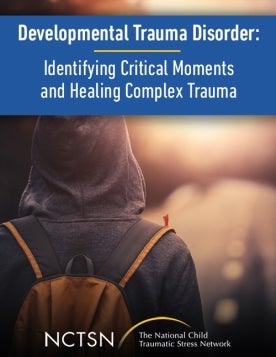
Understanding How an Immigrant Family Navigates Family Trauma
DIscusses the intersection of complex trauma, development, and culture creates a foundation for effective case planning, treatment, and intervention.
The following resources on Culture and Trauma were developed by the NCTSN.

DIscusses the intersection of complex trauma, development, and culture creates a foundation for effective case planning, treatment, and intervention.
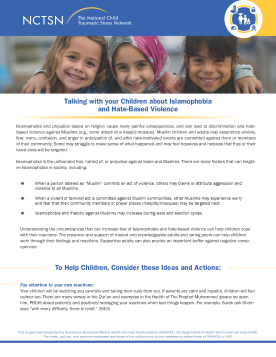
Discusses Islamophobia and hate-based violence against Muslims, highlights strategies that parents and caregivers can usd to facilitate effective conversations, offers age-specific guidelines, and provides actions families and communities can take before an event occurs.
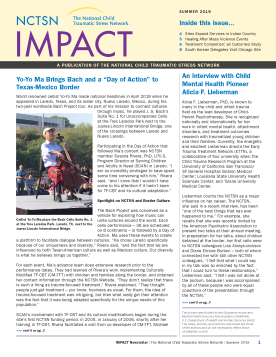
Offers a glimpse into the diverse work that our Network members do. In this vein, we profile one of our long-time members, Alicia F. Lieberman, PhD, a child mental health pioneer, as well as Rebecca Frances Hoffmann, an active Affiliate member.
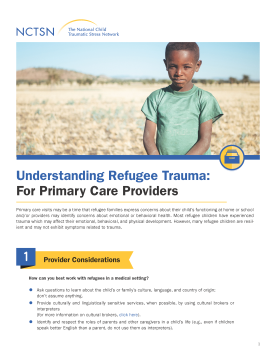
Outlines different considerations that primary care providers need to take into account when working with refugee youth and their families.
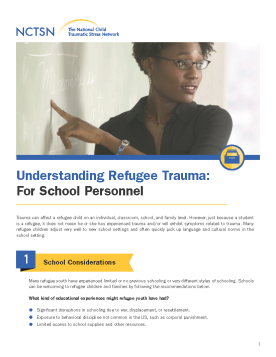
Outlines different considerations that school personnel need to take into account when working with refugee youth and their families. This fact sheet describes the school, classroom, individual, and family considerations that school staff should understand when working with this population.

Helps educators understand how they might address the interplay of race and trauma and its effects on students in the classroom. The guide outlines recommendations for educators and offers a list of supplemental resources.
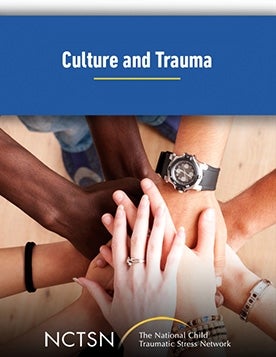
Offers information about refugee arrivals in the U.S. and refugee mental health needs and best practices.

Discusses how families living in racially and economically segregated communities must also cope with the effects of historical trauma and intergenerational racism.
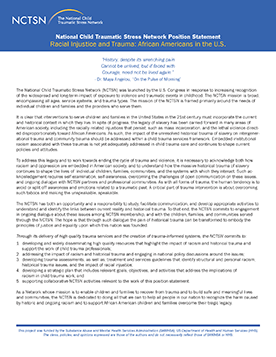
Emphasizes the importance of understanding how historical trauma has shaped the experiences of African Americans.
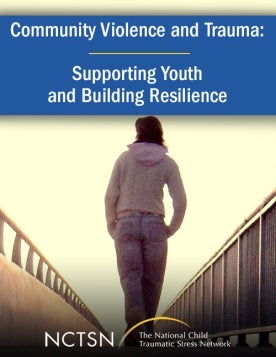
Explores both the historical and current causes for disproportionality.

Provides an overview of working with unaccompanied minors and the unique nature of the trauma they may have experienced. This resource describes symptoms or behaviors unaccompanied minors may display, cultural considerations for providers, and additional resources.

Offers concrete strategies and recommendations for providers working with LGBTQ youth who have experienced trauma. This webinar series discusses how to increase access to services, create a safe environment for care, and work with families and schools.